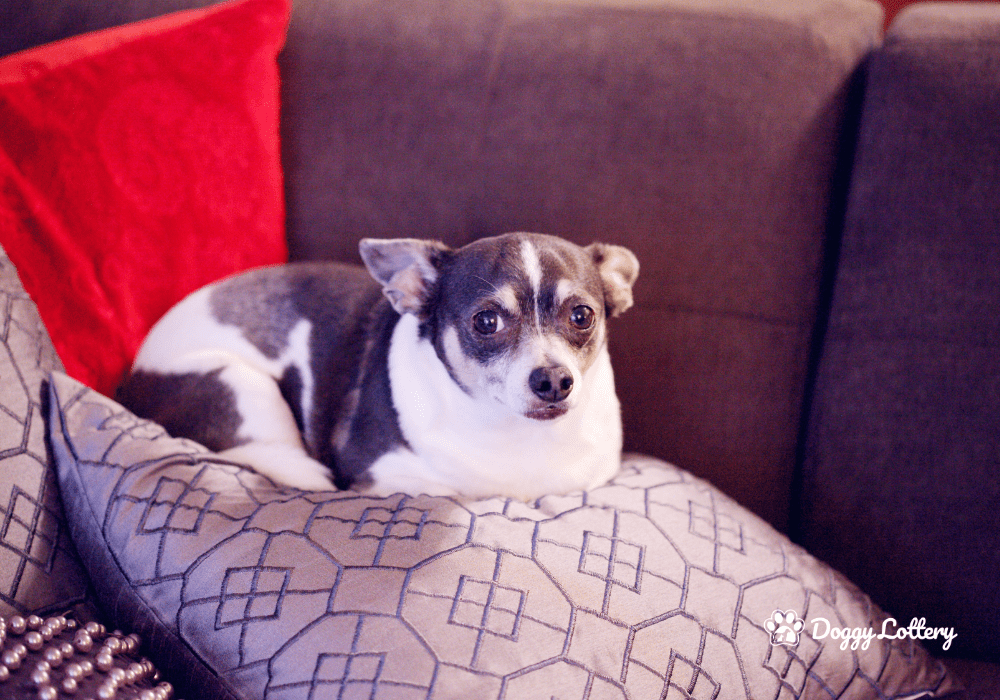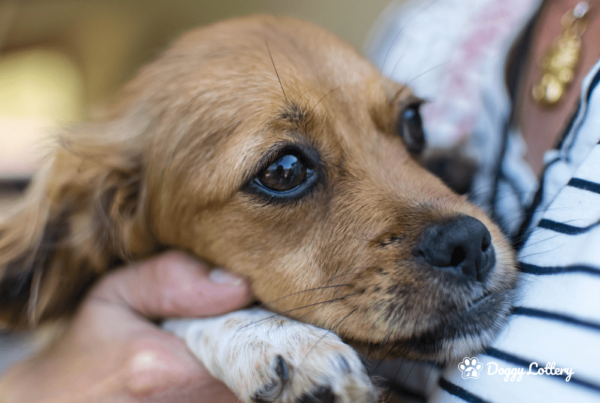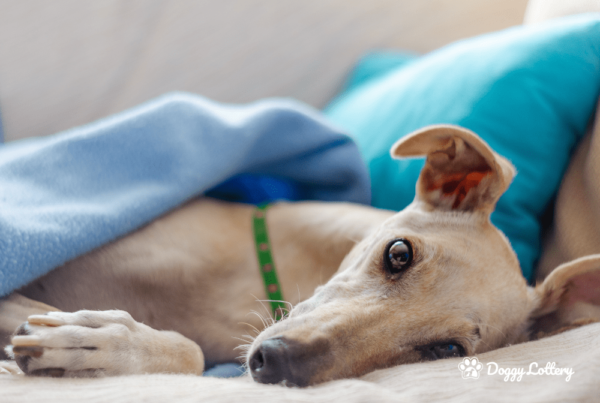
Do you have a niggling feeling that your dog is overweight? Perhaps their tummy looks a little rounder than usual, or they’re beginning to tire easily and lag behind on walks.
As dog owners, we love our furry friends unconditionally. They’re loyal, caring, cuddly and cute. It’s tempting to give them everything they want, and what do dogs love the most? (Apart from you of course!) That’s right – food. The trouble is that your dog is unable to tell if they’re overweight. They can’t hop on the scales or look in the mirror; they can’t join a gym and they certainly won’t say no to a treat! Finding out whether or not your dog is a healthy weight and helping them reach or maintain a healthy weight is entirely up to you. Getting this right can help your pup lead a long, happy and healthy life.
Keeping your dog’s weight at an ideal, healthy level is easy enough to do – it just takes the right know-how when it comes to diet and exercise. Taking your dog for regular health check-ups and seeking the advice of a vet is crucial, but you can also check your dog’s bodyweight yourself. Read on to find out how!
Is My Dog Overweight?
Obesity in dogs is widely considered to be one of the top welfare issues for canines in the UK. Worryingly, most owners don’t even realise their dog is overweight! A qualified vet will be able to tell you whether your furry friend is a healthy weight for their breed, gender, age and size. However, there are a number of simple checks you can carry out yourself at home.
First thing’s first, take a good look at the size of your dog’s waist. Look down at your dog from above and then from the side. Ideally, your dog should have a defined, tucked-in waistline – it shouldn’t bulge out at the sides.
Next, feel your dog’s shape with your hands. There should be a distinction between their chest and stomach, and their stomach shouldn’t bulge out. Can you feel your dog’s ribs, hip bones and spine? No? Don’t panic and assume that you’re not feeding your dog enough; being able to feel these bones is a sign that your pup is a healthy weight! Finally, gently press around the area where your dog’s tail meets their spine. A build-up of fat in this area is a common symptom of obesity.
It’s not just your dog’s appearance that suggests they are overweight; you should monitor their actions and movements for other signs of obesity. For instance, if your pup is moving around more slowly than before, perhaps struggling to get up the stairs or panting heavily, this may suggest they are feeling the effects of excess weight.
Causes of Obesity in Dogs
Obesity in dogs is a well-researched topic and statistics are regularly updated. The facts and figures reveal a lot about the wellbeing of dogs and the attitudes of owners. Here are some interesting statistics from the PDSA’s 2021 PAW Report:
9% of dog owners in the UK report that their dog has gained weight since March 2020. So why do these dog owners believe their dog has gained weight? Here are some of the reasons given:
- Owners say they like to give their dog treats
- Some said they give in when their dog begs for food
- Others said their dog was fussy with food
- 1% of owners questioned said they like their dog to be ‘chunky’!
Perhaps the most alarming revelation was that 31% of pet owners (including dog owners) did not agree that obesity is a health risk for animals, and 35% did not agree that their pet is at risk of living a shorter life as a result of obesity.
When asked what was preventing their dog from losing weight, a whopping 48% of dog owners in the survey responded that their pet didn’t need to lose weight, which highlights a lack of awareness. In reality, vets estimate that over 50% of dogs in the UK are overweight!
So, what causes weight gain and obesity in dogs according to veterinary experts?
Most dogs reach an unhealthy weight because of their diet and exercise regime. Obesity in dogs usually suggests that a pup has been eating too much and getting too little exercise.
There are some medical conditions that cause weight gain in dogs, such as hypothyroidism and Cushing’s disease. If your pup has gained weight and you can’t work out why, it’s always a good idea to have them checked out by a vet.
Risks of Obesity in Dogs
Dogs don’t need to be drastically overweight to suffer the consequences of obesity. If your dog is weighing in at only a few kilograms above their ideal weight, this could still have a significant impact on their health and wellbeing, and ultimately, their lifespan.
Some of the most common risk factors are: arthritis, liver, heart and kidney disease, cancer, diabetes, incontinence, cruciate ligament injury and breathing problems. An overweight dog is also much more likely to suffer from heatstroke in warm or hot weather.
Preventing Weight Gain and Obesity in Dogs
As a dog owner, you have a responsibility to provide a suitable diet for your dog and do everything in your power to prevent pain, injury and suffering. Part of this duty of care is helping to prevent obesity.
Each dog has different dietary needs depending on their breed, size, age and gender, so do your research and make sure you’re providing your dog with the food they need to thrive. Dog-friendly human foods should only be given as an occasional treat, and although it is tempting to give in to those persuasive puppy dog eyes, be firm and say no. Dogs love to eat anything and everything, so it’s up to you to make sure that they’re not biting off more than they can chew!
All dogs need between 30 minutes to 2 hours of physical activity per day, but this also depends on their individual requirements. For example, a large breed like the Labrador was bred for lots of physical activity, so they need multiple long walks each day, whereas smaller breeds like Basset Hounds, Shih Tzus and Pugs only need one or two short strolls.
Remember, if you’re not giving your dog enough opportunity to exercise, this won’t just result in weight gain; your pup will likely experience boredom and stress and begin to display unwanted behaviour.
To check that the amount and type of food you are giving your dog is right for them, and that they’re getting the right amount of exercise, check in with your vet who will be able to give you some helpful guidelines to follow. If your dog is overweight, a vet will advise you on steps to take to help them lose weight, get more active, and become a much healthier version of themselves.
Find out more about your responsibilities as a dog owner!
Obesity in Dogs and Dog Abandonment
In the majority of cases, dogs don’t become obese because of cruelty. However misguided and harmful it is, many dog owners overfeed their pets because they love them and want them to enjoy life.
Nevertheless, dog rescue centres up and down the UK see some morbidly obese dogs come through their doors as a result of neglect or malicious intent. Sometimes, obese dogs are abandoned simply because they are ill or injured, and their owner might not have the time or money to help them recover.
Give a dog a new lease of life at a dog rescue centre
Will you help to give an obese dog a new lease of life at a dog rescue centre? With your support, they can receive the healthcare they need, plus the right nutrition and exercise to help get them back on track and ready to live life to the max.
Play the DoggyLottery today for your chance to win incredible cash prizes while supporting the vital work of dog rescue centres.



